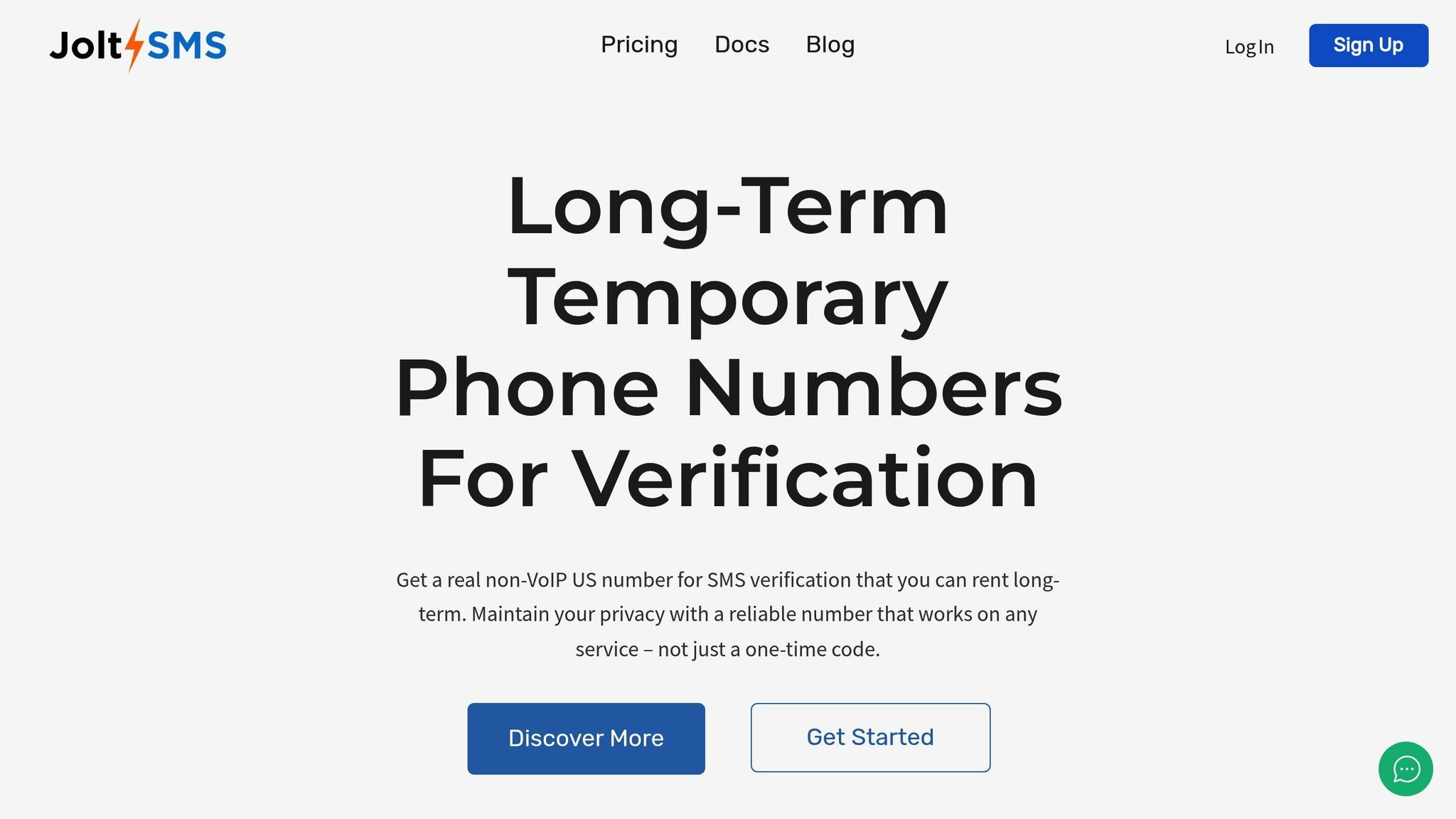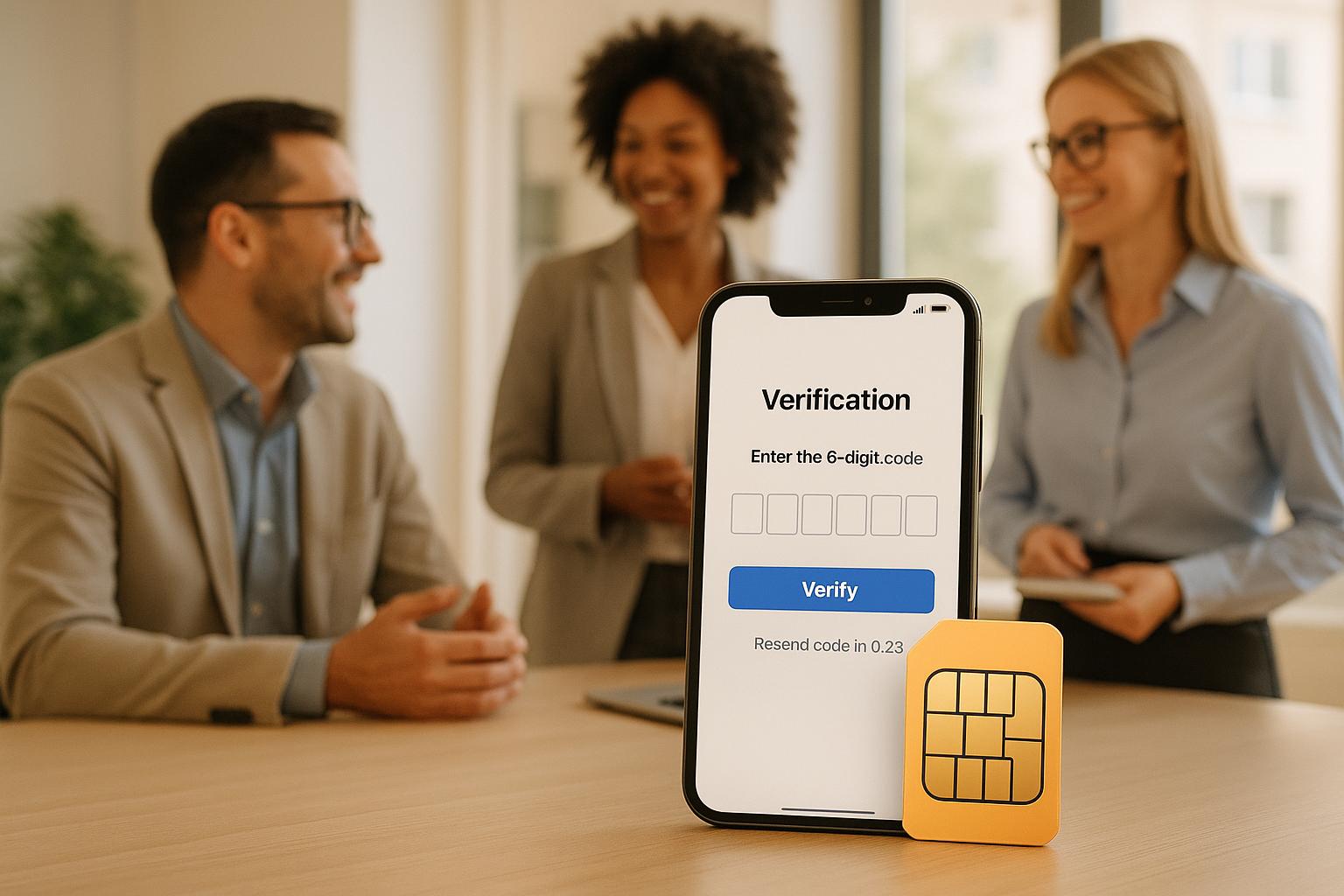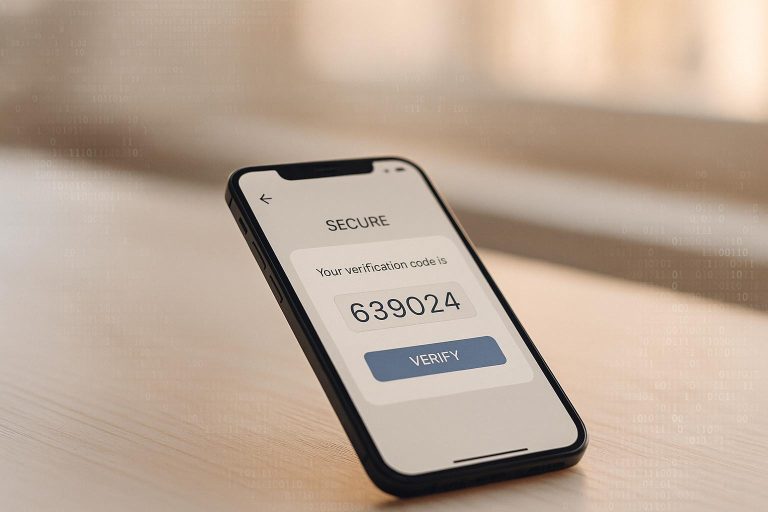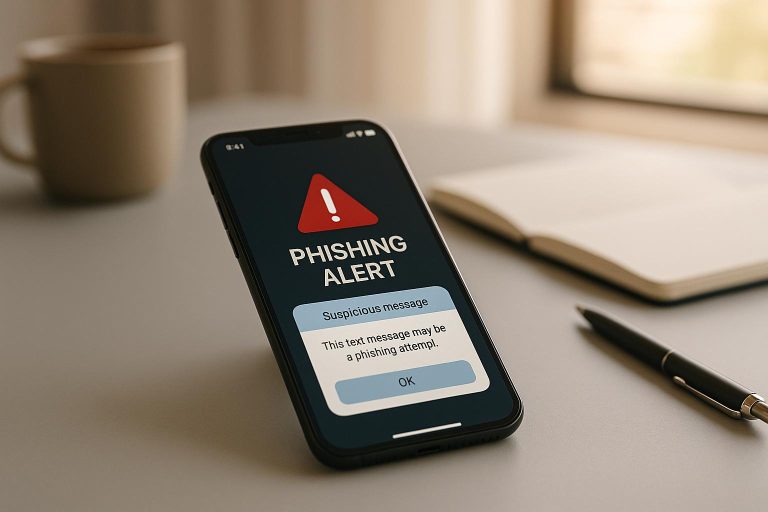Remote Team Phone Management: Share OTPs Without Sharing Personal Numbers
Managing OTPs remotely is a challenge for teams relying on personal numbers or unreliable VoIP services. Here’s the solution: use dedicated real-SIM numbers to securely handle business verifications without mixing personal and work communications.
Key takeaways:
- Why SMS matters: Platforms like Google Workspace and AWS often require SMS OTPs for security.
- The problem: Personal numbers raise privacy concerns, and VoIP numbers are frequently blocked for OTPs.
- The solution: Real-SIM numbers ensure reliable OTP delivery and separate business from personal use.
- Bonus: Tools like JoltSMS integrate OTPs with Slack or Discord for seamless sharing.
For $50/month, JoltSMS offers 99.9% delivery success, supports 1,000+ platforms, and simplifies team collaboration with webhook integrations. This setup ensures privacy, reliability, and efficiency while avoiding disruptions caused by outdated methods.
OTP Delivery Methods and Common Problems
The way One-Time Passwords (OTPs) are delivered can significantly affect both security and efficiency. Each method comes with its own set of challenges and trade-offs, which can directly influence how teams operate.
Types of OTP Delivery Methods
There are four primary ways to deliver OTPs, each with distinct advantages and limitations.
SMS-based OTPs are the most widely used, with platforms like Stripe, AWS, and Google Workspace often defaulting to text message verification. These codes are sent straight to a phone number, usually within seconds of being requested, making them quick and convenient.
Email-based OTPs provide an alternative that doesn’t rely on having a phone on hand. Services like Microsoft 365 and many banking platforms send codes to registered email addresses. While this method is convenient, it can run into issues like codes landing in spam folders or delays caused by email server outages.
Authenticator apps, such as Google Authenticator and Microsoft Authenticator, generate time-based codes on a device. These apps work offline, ensuring consistent access once set up. However, they require initial configuration and can cause headaches if a team member loses or replaces their device.
Hardware tokens are physical devices that generate OTPs. These are often required in industries with strict security needs, like finance. While highly secure, hardware tokens can be expensive to implement, especially for remote teams, and are prone to being lost or damaged.
Why SMS-Based OTPs Create Problems
Although SMS OTPs are popular, they come with significant challenges, particularly for remote teams. The telecommunications systems that support SMS weren’t built with modern security in mind, leaving them vulnerable to threats like SIM swapping, phishing, and man-in-the-middle attacks [2][3][4][6]. These risks make centralized OTP management difficult, which is critical for securing remote teams.
Network reliability issues add another layer of complexity. Weak signals, cellular outages, and delayed message delivery can all disrupt the flow of SMS OTPs [1][3][6].
Additionally, VoIP numbers are often blocked by platforms, forcing employees to use personal numbers. This raises privacy concerns and creates administrative headaches, especially when employees update their contact information or leave the company.
For larger organizations, managing SMS OTPs can become an administrative burden. With diverse user bases, multiple carriers, and varying international regulations, businesses often face inefficiencies that lead to user frustration, workflow interruptions, and an increase in support requests [5][6].
Comparison Table: OTP Delivery Options
| Method | Security Level | Platform Acceptance | Setup Complexity | Privacy Protection | Cost |
|---|---|---|---|---|---|
| SMS (Personal) | Low | Universal | Simple | Poor | Free |
| SMS (VoIP) | Low | Limited | Simple | Moderate | $5–15/month |
| SMS (Real‑SIM) | Medium | Universal | Simple | Excellent | $10–25/month |
| Medium | Moderate | Simple | Good | Free | |
| Authenticator Apps | High | Moderate | Complex | Excellent | Free |
| Hardware Tokens | Very High | Limited | Very Complex | Excellent | $25–100+ per device |
This table highlights the trade-offs of each method. While personal SMS numbers are widely accepted, they often compromise security and privacy. VoIP numbers offer better privacy but face acceptance challenges. Real‑SIM solutions strike a balance, providing universal acceptance and stronger privacy protections. Email and authenticator apps are effective when supported, but many business-critical platforms still lean heavily on SMS verification. Hardware tokens, while offering the highest level of security, are often impractical for remote teams due to their high cost and complexity.
These limitations emphasize the need for more secure and reliable OTP delivery methods – this is where real-SIM technology comes into play.
Real-SIM Number Rentals: The Best Solution
Real-SIM number rentals solve the common problems associated with traditional OTP delivery methods by offering dedicated phone numbers that work seamlessly across platforms. This method simplifies SMS verification while maintaining team privacy. Let’s dive into how real-SIM technology tackles these verification challenges effectively.
How Real-SIM Technology Works
Real-SIM technology operates using physical SIM cards that connect directly to cellular networks, bypassing internet-based VoIP services. When platforms like Google, Amazon, or ChatGPT send an OTP, the message is transmitted through the same reliable infrastructure used for personal phone communications. This setup is especially critical for remote teams that need a secure, independent verification channel. Many platforms require non-VoIP numbers, and real-SIM fulfills this need consistently. The dedicated nature of these numbers reduces issues like flagging or recycling, ensuring a smooth verification process.
JoltSMS: Dedicated Real-SIM Numbers for Teams

JoltSMS takes this dependable technology a step further, offering tailored real-SIM solutions designed specifically for remote teams.
JoltSMS provides long-term, dedicated U.S. phone numbers for business SMS verification. By leveraging trusted SIM hardware, JoltSMS delivers a 99.9% SMS success rate and supports over 1,000 platforms, including Google, WhatsApp, Coinbase, Stripe, various banking apps, and AWS.
Unlike VoIP services that often face challenges with SMS verification, JoltSMS’s real-SIM solution directly addresses these issues. Key features include:
- Webhook integration for Slack and Discord.
- A real-time dashboard with REST API for live SMS monitoring and automation.
- Transparent pricing: $50 per month for unlimited inbound SMS, with a 30-day minimum, fair-use, and auto-renewal plan.
- 24/7 support with a money-back guarantee.
Comparison Table: JoltSMS vs. VoIP Services
| Feature | JoltSMS (Real-SIM) | Google Voice | OpenPhone | RingCentral |
|---|---|---|---|---|
| Technology | Physical SIM cards | VoIP over internet | VoIP over internet | VoIP over internet |
| SMS Verification Success | 99.9% delivery rate | Often blocked | Often blocked | Often blocked |
| Platform Acceptance | 1,000+ platforms | Limited for verification | Limited for verification | Limited for verification |
| Team Webhook Integration | Built-in for Slack/Discord | Not available | Not available | Limited |
| Privacy Protection | Dedicated, never shared | Shared infrastructure | Business-focused | Business-focused |
| Monthly Cost | $50 | Free | $15+ | $20+ |
| Primary Use Case | SMS verification | Personal calling | Business calling | Enterprise calling |
This table highlights why businesses often experience verification failures with VoIP services. Providers like Google Voice, OpenPhone, and RingCentral are excellent for voice calls and general business communication but fall short when it comes to SMS verification. For businesses where reliable access to critical accounts is non-negotiable, JoltSMS’s real-SIM numbers offer a dependable and hassle-free solution.
Team Collaboration with OTP Management Tools
For remote teams, sharing OTPs (one-time passwords) securely and efficiently is essential. Automated OTP sharing, integrated with popular collaboration platforms, turns what used to be a tedious manual task into a seamless, secure process. These integrations ensure that teams stay connected and productive without compromising privacy or security.
Setting Up Automatic OTP Sharing with Webhooks
Webhooks enable a direct connection between your dedicated number and your team’s communication channels. This setup ensures verification codes are shared automatically, giving authorized team members immediate access without delays or the hassle of manual forwarding.
JoltSMS’s webhook system delivers real-time notifications to your selected collaboration platform. This eliminates the common bottleneck where a single team member’s unavailability delays an entire project because they’re unable to share a verification code from their device.
The webhook payload includes the full message content, ensuring that critical verification codes don’t get lost in personal messages or email chains. It also maintains a clear audit trail, which is crucial for accountability and security.
Setup Steps for Remote Teams
To get your automated OTP system running, you’ll need three key components: a dedicated real-SIM number, webhook configuration, and team access controls. Here’s how to set it up:
- Provision a dedicated U.S. number: Use the JoltSMS dashboard to select and activate a dedicated phone number for your team’s OTP needs. Once configured, the number is ready for receiving verification codes immediately.
- Configure your webhook: Set up your collaboration platform to receive OTPs via webhooks. For Slack, create an Incoming Webhook in your workspace’s app directory, then copy the webhook URL into the JoltSMS dashboard. For Microsoft Teams, use the Workflows app or Power Automate, as older Microsoft 365 Connectors are being phased out [7][8]. Discord’s webhook system also supports rich message formatting, allowing you to customize how OTP notifications appear in team channels.
- Test the integration: Request a verification code to confirm the webhook pipeline is functioning correctly. The code should appear instantly in the designated team channel.
Security and Compliance Requirements
To protect sensitive information, implement role-based access controls so that only authorized team members can view OTPs. This reduces the risk of unauthorized access to critical verification processes.
Audit logging is another essential feature. Most collaboration platforms include built-in message history and search capabilities, creating a natural record of when codes were received and who accessed them. This documentation is invaluable for compliance reviews and investigating security incidents.
Additionally, align your data retention policies with your organization’s security standards. While OTPs typically expire within minutes, message histories in team channels can persist indefinitely. Configure retention settings to balance operational needs with privacy requirements.
For teams handling sensitive data, such as in financial or healthcare industries, consider extra precautions like private channels with restricted membership, two-factor authentication for channel access, and regular access reviews. These measures ensure only current team members can see verification codes.
U.S.-based teams should also account for data privacy regulations, including state-level requirements specific to their industry. JoltSMS’s U.S.-based infrastructure supports compliance with domestic data handling standards, while webhook integration keeps verification data securely within your organization’s existing systems.
sbb-itb-070b8f8
Best Practices for Remote OTP Management
When it comes to managing OTPs (one-time passwords) remotely, having clear policies and systems in place is key to maintaining security and efficiency. Building on the advantages of real-SIM technology, these best practices can help safeguard your verification processes, avoid common security pitfalls, and ensure compliance with regulatory standards.
Avoid Using Personal Numbers for Team OTPs
Relying on personal phone numbers for business OTPs is a recipe for trouble. If an employee is unavailable or leaves the company, access to critical business platforms can be lost. Plus, mixing personal and business communications blurs boundaries, creating unnecessary interruptions.
From a security standpoint, personal devices often lack the protections required for business use. Personal phones might not have encryption, regular updates, or corporate-level security policies, leaving them vulnerable to breaches.
The solution? Dedicated real-SIM numbers. These numbers separate personal and business communications, ensuring reliable OTP delivery while simplifying transitions when employees leave or change roles. With this setup, business accounts remain accessible without being tied to any individual’s personal device.
Centralize Access Control
Centralized tools for OTP management give administrators better control over who can access verification codes, boosting both security and accountability.
- Role-based access controls: Limit OTP access to only those who need it. For example, employees handling financial platforms or administrative systems may require access, but others might not. Create specific channels or groups based on roles and security clearance.
- Real-time monitoring: Use dashboards to track verification activity. This includes knowing which platforms request codes, when attempts occur, and whether the codes are successfully used. Unusual patterns can signal potential threats or system issues.
- Access logging: Collaboration tools like Slack or Microsoft Teams often log who views messages and accesses channels. These logs provide a natural audit trail, useful for compliance reviews or security investigations.
- Regular reviews: Continuously update permissions to reflect team changes. Remove former employees and adjust access levels as roles evolve. Automated provisioning systems connected to HR tools can streamline this process, ensuring only the right people have access.
By implementing these controls, you not only enhance security but also align with privacy standards.
Prioritize Data Privacy Standards
For teams handling sensitive information, OTP management must comply with data privacy regulations. Combining centralized access control with robust privacy measures ensures end-to-end protection. U.S.-based teams, for instance, must navigate both federal and state-specific privacy laws.
- Data retention policies: Define how long OTPs and related logs are stored. While OTPs expire within minutes, message histories can linger in team channels. Some organizations delete verification messages after 30 days, while others retain them longer for audits. Configure retention settings to balance operational needs with privacy requirements.
- Geographic data handling: Depending on your industry, there may be strict rules about where data is stored and processed. For example, JoltSMS operates on U.S. infrastructure, meeting domestic data handling standards – a critical factor for industries like finance, healthcare, or government contracting.
- Cross-border data transfers: If your team operates internationally, ensure that webhook integrations and other data transfers comply with encryption and approved routing standards.
Regular compliance audits are essential. Document your OTP workflows, access controls, and data handling procedures to stay prepared for regulatory reviews. These audits also help identify areas where processes need to evolve as regulations change.
Finally, establish clear incident response procedures. Whether it’s a compromised account, unauthorized access, or suspicious verification activity, having a plan in place can prevent small issues from escalating into major breaches. Quick action is often the difference between a minor hiccup and a full-blown security crisis.
Conclusion: Simplify and Secure Your Team’s OTP Management
Managing OTPs for remote teams doesn’t have to be a hassle. By combining real-SIM technology with centralized collaboration tools, you can create a system that keeps your team efficient and secure.
JoltSMS real-SIM numbers solve the problem of VoIP verification limits. While services like Google Voice or OpenPhone are excellent for business calls, they often run into roadblocks with verification systems. JoltSMS, on the other hand, uses carrier-grade SIM hardware that’s accepted by over 1,000 platforms. At just $50 per month with unlimited inbound SMS, it’s a no-nonsense solution to avoid the headaches of failed verifications.
Integration is another game-changer. The webhook feature allows OTPs to flow directly into Slack or Discord channels. No more waiting for someone to forward codes manually or scrambling to find the right contact in a pinch. Everything is automated, delivering codes instantly to designated channels. This not only speeds up response times but also ensures full visibility into who is accessing what, all while fitting seamlessly into your existing centralized OTP systems.
Privacy and security are built into the system by keeping business verifications separate from personal devices. This eliminates interruptions during off-hours and reduces security risks tied to personal phones. Plus, the dedicated number stays with the company, ensuring continuity even as team members come and go.
With a 99.9% delivery rate and 24/7 support, you can count on access to critical platforms whenever you need it. Whether it’s logging into AWS late at night for an urgent fix or accessing financial tools during a month-end crunch, your verification codes will always be there right when you need them.
FAQs
How does JoltSMS keep OTPs secure and protect team privacy when using real-SIM numbers?
JoltSMS takes security and privacy seriously by utilizing real SIM-based numbers instead of relying on VoIP or disposable alternatives. These numbers are designed for long-term use and are widely accepted by platforms like Google, WhatsApp, and banks. This ensures dependable OTP delivery without the need to share personal phone numbers.
Unlike virtual or VoIP numbers, real SIM numbers are far less likely to be flagged or blocked, offering a safer and more private option for remote teams. By centralizing OTP management, JoltSMS simplifies team access while maintaining strong safeguards against unauthorized use.
Why are real-SIM numbers better than VoIP services for OTP verification in remote teams?
Real-SIM numbers are trusted for OTP verification because they are genuine mobile numbers, unlike VoIP services, which are often flagged or rejected by many platforms. This reliability makes them ideal for verifying accounts on services like WhatsApp, Stripe, or Google.
For remote teams, real-SIM numbers provide secure and uninterrupted access to OTPs, ensuring smooth workflows without delays. While VoIP services may handle calls effectively, they often fall short with SMS verification, making real-SIM numbers the preferred option for maintaining privacy, security, and dependability.
How can teams use JoltSMS to securely share OTPs on Slack or Discord?
Teams can now share OTPs securely on Slack or Discord by integrating JoltSMS with tools like Zapier or IFTTT. With JoltSMS webhooks, you can set up OTPs to be sent directly to specific channels on these platforms, ensuring an automated and secure sharing process.
This method not only saves time but also keeps sensitive information well-organized while protecting privacy by eliminating the need for personal phone numbers. All you need to do is create dedicated channels for OTPs and let the automation do the work.







